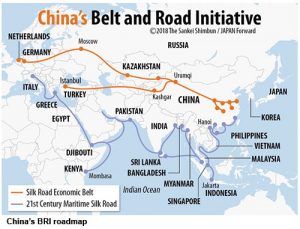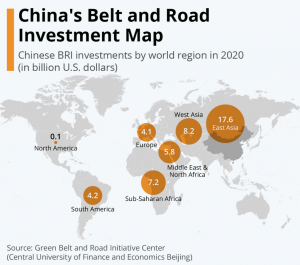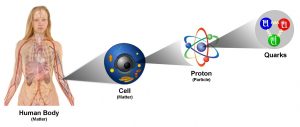THE HEALTH ISSUES
1. EXPLAINED: WHAT ARE NAIROBI FLIES, WHICH ARE CAUSING DISEASE IN SIKKIM?
THE CONTEXT: According to the state health officials, around 100 students of an engineering college in East Sikkim have reported skin infections after coming in contact with Nairobi flies.
THE EXPLANATION:
What are Nairobi flies?
- Nairobi flies, also called Kenyan flies or dragon bugs, are small, beetle-like insects that belong to two species, Paederuseximius and Paederussabaeus. They are orange and black in colour, and thrive in areas with high rainfall, as has been witnessed in Sikkim in the past few weeks.
- Like most insects, the beetles are attracted by bright light.

How are humans affected by them?
- Usually, the insects attack pests that consume crops and are beneficial for humans — but at times, they come in contact with humans directly are cause harm. Health officials say these flies do not bite, but if disturbed while sitting on anyone’s skin, they release a potent acidic substance that causes burns.
- This substance is called pederin, and can cause irritation if it comes in contact with the skin, leading to lesions or unusual marks or colouring on the skin. The skin begins to heal in a week or two, but some secondary infections can occur, especially if the victim scratches the irritated skin.
Have there been outbreaks of the disease?
- Major outbreaks have happened in Kenya and other parts of eastern Africa. In 1998, unusually heavy rain caused a large number of insects to come into the region, reported the Associated Press.
- Outside Africa, outbreaks have happened in India, Japan, Israel, and Paraguay in the past.
What is the way to protect oneself against Nairobi flies?
- Sleeping under mosquito nets can help. If a fly lands on a person, it should be gently brushed off, and should not be disturbed or touched to reduce the chances of it releasing pederin.
THE INTERNATIONAL AFFAIRS
2. EXPLAINED: WHAT ARE CRITICAL MINERALS, THE CENTERPIECE OF A NEW INDIA-AUSTRALIA COLLABORATION?
THE CONTEXT: Recently, India and Australia decided to strengthen their partnership in the field of projects and supply chains for critical minerals.
THE EXPLANATION:
As part of his six-day tour of Australia, Union Coal and Mines Minister met his counterpart, Resources and Northern Australia Minister Madeleine King, after which Australia confirmed that it would “commit A$5.8 million to the three-year India-Australia Critical Minerals Investment Partnership”.
“Australia has the resources to help India fulfil its ambitions to lower emissions and meet growing demand for critical minerals to help India’s space and defence industries, and the manufacture of solar panels, batteries and electric vehicles.
What are critical minerals?
- Critical minerals are elements that are the building blocks of essential modern-day technologies and are at risk of supply chain disruptions.
- These minerals are now used everywhere from making mobile phones, computers to batteries, electric vehicles and green technologies like solar panels and wind turbines. Based on their individual needs and strategic considerations, different countries create their own lists.
- However, such lists mostly include graphite, lithium and cobalt, which are used for making EV batteries; rare earths that are used for making magnets and silicon which is a key mineral for making computer chips and solar panels. Aerospace, communications and defence industries also rely on several such minerals as they are used in manufacturing fighter jets, drones, radio sets and other critical equipment.
Why is this resource critical?
- As countries around the world scale up their transition towards clean energy and digital economy, these critical resources are key to the ecosystem that fuels this change. Any supply shock can severely imperil the economy and strategic autonomy of a country over-dependent on others to procure critical minerals.
- But these supply risks exist due to rare availability, growing demand and complex processing value chain. Many times, the complex supply chain can be disrupted by hostile regimes, or due to politically unstable regions.
What is the China ‘threat’?
- According to the 2019 USGS Mineral Commodity Summaries report, China is the world’s largest producer of 16 critical minerals.
- China, according to a report on the role of critical minerals by the International Energy Agency, is “responsible for some 70% and 60% of global production of cobalt and rare earth elements, respectively, in 2019. The level of concentration is even higher for processing operations, where China has a strong presence across the board. China’s share of refining is around 35% for nickel, 50-70% for lithium and cobalt, and nearly 90% for rare earth elements.”
- It also controls cobalt mines in the Democratic Republic of Congo, from where 70% of this mineral is sourced.
VALUE ADDITION:
India and Australia co-operate in various multilateral forums:
- Australia supports India’s candidature in an expanded UN Security Council.
- Both India and Australia are members of the G-20, Commonwealth, IOR-ARC, ASEAN Regional Forum, Asia Pacific Partnership on Climate and Clean Development, and have participated in the East Asia Summits.
- Both countries have also been cooperating as members of the Five Interested Parties (FIP) in the WTO context.
- Australia is an important player in APEC and supports India’s membership in the organization.
- In 2008, Australia became an Observer in SAARC.
India-Australia Defence cooperation
- IFC-IOR: The Information Fusion Centre – Indian Ocean Region in Gurugram.
- Strategic Dialogue:In June 2020, Australia and India decided to upgrade their Secretaries 2+2 dialogue (Defence and Foreign Affairs) to the Ministerial level.
- Exercise Malabar: Australia participated in the MALABAR naval exercise in October 2020, joining India, the United States, and Japan.
- AUSINDEX: Engagement between the Royal Australian Navy and the Indian Navy has advanced significantly through the key bilateral exercise, AUSINDEX.
- Pitch Black: For the first time, the Indian Air Force participated in Exercise Pitch Black in Darwin in 2018.
3. THE STATUS OF CHINA’S BELT AND ROAD INITIATIVE IN SOUTH ASIA
THE CONTEXT:Recently concluded summit of G-7 leaders in Germany, U.S. President and his allies unveiled their $600 billion plan called the Partnership for Global Infrastructure and Intelligence which is being seen as a counter to China’s Belt and Road Initiative (BRI).
THE EXPLANATION:
What is China’s Belt and Road Initiative?
In 2013, Chinese President Xi Jinping, during his visits to Kazakhstan and Indonesia, expressed his vision to build a Silk Road Economic Belt and a 21st Century Maritime Silk Road, to break the “bottleneck” in Asian connectivity. This vision led to the birth of the BRI.
The initiative envisioned a Chinese-led investment of over $1 trillion in partner countries by 2025. More than 60 countries have now joined BRI agreements with China, with infrastructure projects under the initiative being planned or under construction in Asia, Africa, Europe, and Latin America.
To finance BRI projects, China offers huge loans at commercial interest rates that countries have to pay within a fixed number of years. The west has accused China of debt-trapping by extending “predatory loans” that force countries to cede key assets to China.
However, research indicates that low and middle-income countries are often the ones to approach China after not being able to secure loans from elsewhere.
In recent years, the BRI seems to have experienced a slowing down as annual Chinese lending to countries under the initiative slimmed from its peak of $125 billion in 2015 to around $50 to 55 billion in 2021.

What have been the BRI’s investments in Pakistan?
- On his 2015 visit to Pakistan, Mr. Xi and then Pakistan Prime Minister Nawaz Sharif unveiled the BRI’s flagship project and its biggest one in a single country — the China Pakistan Economic Corridor (CPEC). Over time, China pledged $62 billion in low-interest loans and financing from Chinese state-owned banks and the Asian Development Bank (ADB), up from an initial $46 billion pledge. The CPEC envisioned multiple projects involving energy, transport and communication systems.
- At the centre of the CPEC was the $700 million development of the city of Gwadar into a smart port city that would become the “Singapore of Pakistan”. Gwadar is strategically important as it is an hour’s drive from Iran and less than 320 km from Oman. According to the master plan for Gwadar’s development under BRI, approved in 2020, it would increase the city’s GDP to $30 billion by 2050 and create over a million jobs. However, multiple reports have shown that shipping activities at the Gwadar Port is almost negligible so far, with only some trade to Afghanistan.

What about Sri Lanka?
- In Sri Lanka, multiple infrastructure projects that were being financed by China came under the fold of the BRI after it was launched in 2013.
- The island nation in the last couple of years has witnessed competition between India and China in port terminal and energy projects. In 2021, Colombo ejected India and Japan out of a deal to develop the East Container Terminal at the Colombo port and got China to take up the project. It then awarded the project for the Western Side of the Terminal to the Adani Group.
Are there projects in Afghanistan?
- Afghanistan has not comprehensively been brought into the BRI, despite a Memorandum of Understanding (MoU) being signed with China in 2016. China had promised investments worth $100 million in Afghanistan which is small in comparison to what it shelled out in other South Asian countries. The projects have not materialised so far and uncertainties have deepened after the Taliban takeover last year (2022).
How have projects from India and China progressed in Maldives?
- Situated in the middle of the Indian Ocean, Maldives comprises two hundred islands, and both India and China have strategic interests there. One of the most prominent BRI projects undertaken in the Maldives is the two km long China-Maldives Friendship Bridge — a $200 million four lane bridge.
- Most of China’s investment in the Maldives happened under former President Abdullah Yameen, seen as pro-China. Over the years, opposition protests grew against the large borrowing from China and Mr. Yameen was defeated in 2018. The Maldives’ current regime of President Ibrahim Solih has tried to distance itself from the BRI, focusing more on its ‘India First’ policy. India has also in recent years sought greater ties with the Maldives under ruling Prime Minister ‘Neighbourhood First’ policy.
What about Bangladesh?
- Bangladesh, which joined the BRI in 2016, has been promised the second-highest investment (about $40 billion) in South Asia after Pakistan. Multiple studies, including research by the Council on Foreign Relations, show that Bangladesh has been able to benefit from the BRI while maintaining diplomatic and strategic ties with both India and China.
- It has managed to not upset India by getting India to build infrastructure projects similar to BRI in the country. In 2016, when the Chinese government promised Dhaka BRI investment worth around $40 billion, India followed up in 2017 by extending a $5 billion line of credit and economic assistance.
- BRI projects include China-Bangladesh Friendship Bridges, special economic zones, the $689.35 million-Karnaphuli River tunnel project, upgradation of the Chittagong port, and a rail line between the port and China’s Yunnan province. However, multiple projects have been delayed owing to the slow release of funds by China.
THE SCIENCE AND TECHNOLOGY
4. THE THREE NEW ‘EXOTIC’ SUB-ATOMIC PARTICLES DISCOVERED AT CERN
THE CONTEXT:The Large Hadron Collider beauty (LHCb) experiment — which is investigating the slight differences between matter and antimatter by studying a type of particle called the “beauty quark”, or “b quark” has observed three never-before-seen particles.
THE EXPLANATION:
Large Hadron Collider beauty (LHCb) experiment
- The Large Hadron Collider beauty (LHCb) experiment specializes in investigating the slight differences between matter and antimatter.
- Instead of surrounding the entire collision point with an enclosed detector as do ATLAS and CMS, the LHCb experiment uses a series of subdetectors to detect mainly forward particles those thrown forwards by the collision in one direction.
- The first subdetector is mounted close to the collision point, with the others following one behind the other over a length of 20 metres.
- The LHCb experiment is situated at one of the four points around CERN’s Large Hadron Collider where beams of protons are smashed together, producing an array of different particles.
How does it work?
- The aim of the LHCb experiment is to record the decay of particles containing b and anti-b quarks, collectively known as ‘B mesons’.
- Rather than flying out in all directions, B mesons formed by the colliding proton beams (and the particles they decay into) stay close to the line of the beam pipe, and this is reflected in the design of the detector.
New Finding:
- The three “exotic” additions, a new kind of “pentaquark” and the first-ever pair of “tetraquarks”, to the growing list of new hadrons found at the LHC will help physicists better understand how quarks bind together into these composite particles.
- The first kind was observed in an analysis of “decays” of negatively charged B mesons.
- It is a pentaquark made up of a charm quark and a charm antiquark, and an up, a down, and a strange quark.
- It is the first pentaquark found to contain a strange quark.
- The second kind is a doubly electrically charged tetraquark.
- It is an open-charm tetraquark composed of a charm quark, a strange antiquark, and an up quark and a down antiquark.
- It was spotted together with its neutral counterpart in a joint analysis of decays of positively charged and neutral B mesons.
What are quarks?
- Quarks are elementary particles that come in six “flavours”: up, down, charm, strange, top, and bottom.
- They usually combine in groups of twos and threes to form hadrons such as the protons and neutrons that make up atomic nuclei.
- But they can also combine into four-quark and five-quark particles, called tetraquarks and pentaquarks.
- These exotic hadrons were predicted by theorists about six decades ago, around the same time as conventional hadrons but they have been observed by LHCb and other experiments only in the past 20 years.

VALUE ADDITION:
About CERN:
- CERN began in the 1950s as the European Organization for Nuclear Research.
- Today it is also known as the European Laboratory for Particle Physics.
- It is one of the world’s most prestigious research centres.
- Its business is fundamental physics—finding out what makes our Universe work, where it came from and where it is going.
- At CERN, some of the world’s biggest and most complex machines are used to study nature’s tiniest building blocks, the fundamental particles.
- By colliding these minute particles of matter physicists unravel the basic laws of nature.
- The organisation is the world’s largest nuclear and particle physics laboratory, where scientists and engineers are probing the fundamental structure of the Universe using the most sophisticated scientific instruments and advanced computing systems.
- Presently CERN has 22 member states, four associate member states, and the observer status is given to four states and three International Organisations.
- India is an associate member of the European Organisation for Nuclear Research (CERN).
THE PRELIMS PERSPECTIVE
5. WHAT IS THE FIELDS MEDAL, SO-CALLED ‘MATHEMATICS NOBEL’ AWARDED TO UKRAINIAN PROFESSOR AND THREE OTHERS?
THE CONTEXT:Ukrainian mathematician Maryna Viazovska, chair of Number Theory at École polytechnique fédérale de Lausanne (EPFL) in Switzerland, was named as one of four recipients of the 2022 Fields Medal, an honour that is often described the Nobel Prize in mathematics.
THE EXPLANATION:
- The Fields Medal is awarded by the International Mathematical Union (IMU), an international non-governmental and non-profit scientific organisation that aims to promote international cooperation in mathematics.
- The IMU recognised Viazovska’s work on the sphere-packing problem in 8 and 24 dimensions, EPFL said in an announcement. Previously, the problem had been solved for only three dimensions or fewer.
- Viazovska, 37, is only the second female Fields Medalist, after the Iranian Maryam Mirzakhani in 2014.
Fields Medal
- The Fields Medal is awarded every four years to one or more mathematicians under the age of 40 in recognition of “outstanding mathematical achievement for existing work and for the promise of future achievement”.
- The winners are announced at the International Congress of Mathematicians (ICM), which was supposed to be held in Russia this year but was moved to Helsinki.
- The honour carries a physical medal of 14K gold, 63.5 mm in diameter and weighing 169 g, and with a unit price of approximately 5,500 Canadian dollars, according to the IMU website. There is also a cash award of CAD 15,000.
Indian-origin winners
- Among the more than 60 mathematicians who have been awarded the Fields Medal since 1936, there are two of Indian origin — Akshay Venkatesh of the Institute for Advanced Study at Princeton, who won in 2018, the last time the honour was announced, and Manjul Bhargava of the Department of Mathematics at Princeton University, in 2014.
THE PRELIMS PRACTICE QUESTIONS
Q.The term “Pederin” recently seen in the news, related to
a) A substance released by insects which cause irritation.
b) A Critical mineral recently found in Australia, which helps in the production of Lithium.
c) A new dwarf planet discovered by James Web telescope.
d) A chemical substance found in toiletries which causes cancer.
ANSWER FOR 5TH JULY 2022
ANSWER: A
EXPLANATION:
- Alluri Sitarama Raju led the militant movement of tribal peasants in Andhra Pradesh.
Spread the Word


